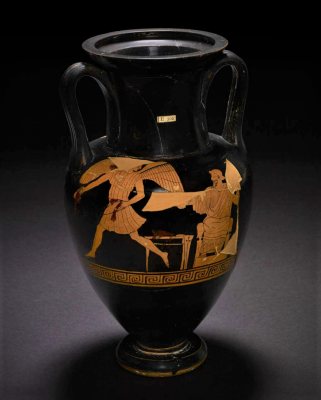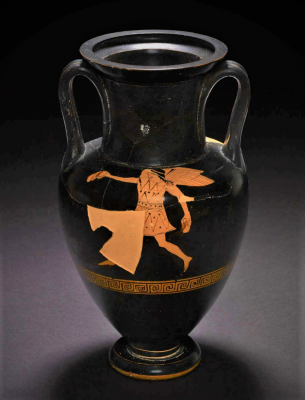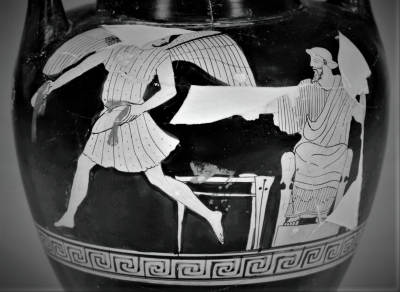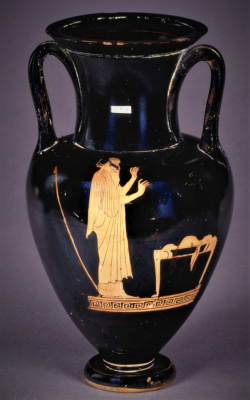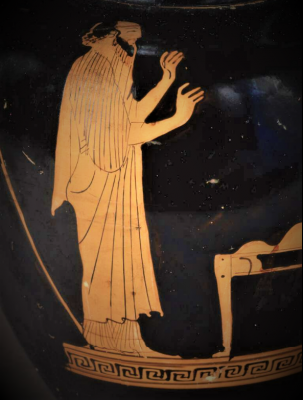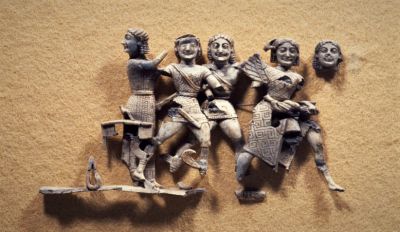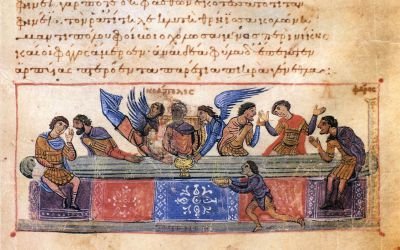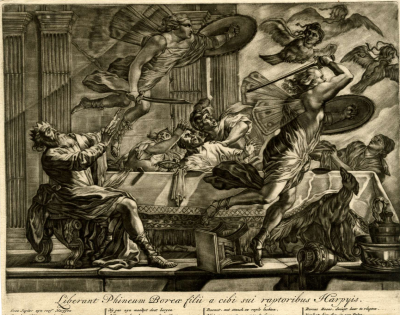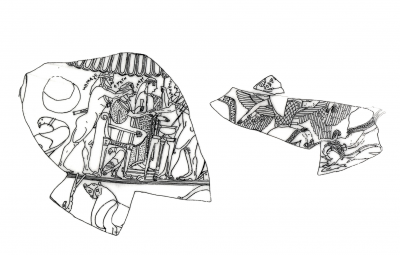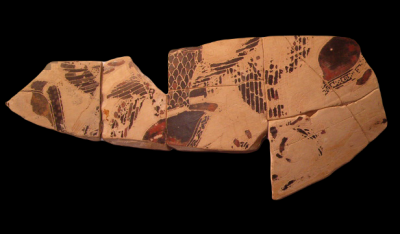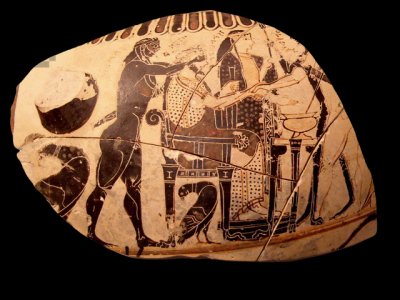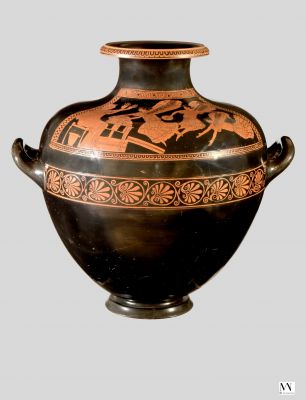
Most sources say that Phineus was the king of the Thracian land of Salmydessus. He was the son of Agenor and Cassiopia, or by other accounts the son of Phoenix or of Poseidon. His first wife was Cleopatra, daughter of Boreas and Oreithyia; together they had two sons, Plexippus and Pandion. His second wife was either Idaea, daughter of the Scythian king Dardanus, or Eidothea, the sister of Cadmus. Eidothea was jealous of her two stepsons and falsely accused them of trying to rape her. Phineus believed her and had them blinded; according to another source, though, it was Idaea who had them blinded, persuaded Phineus to shut Cleopatra away in a prison and to throw the boys into a trench where they would be whipped eternally. Another version says that Cleopatra, seeking vengeance on Phineus, told him that his children had injured her and Phineus, believing her, had them blinded. But his father-in-law Boreas was revolted by this atrocious act and Phineus was either blinded by him or by Cleopatra’s brothers, Calais and Zetes. Phineus was famous as a seer. By some accounts he was punished with blindness by Zeus, because he foretold the future, or by Poseidon, because he showed the sons of Phrixus how to return to Greece from Colchis. Phineus also played an important role in the expedition of the Argonauts: when they reached his country, the Argonauts – and especially Calais and Zetes – saved Phineus from the Harpies who continually snatched away his food; he returned the favour by telling them how to pass safely between the Symplegades. Variants of the story say that the Harpies had carried Phineus off to Scythia and that it was not Harpies that devoured his food but his daughters, Harpyria and Erasia.




